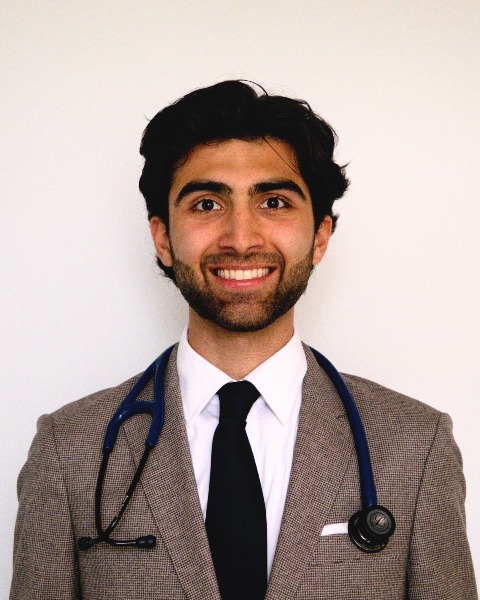Cardiac Surgery
POSTER SESSION #2
P026 - REIMPLANTATION AND REMODELING WITH ANNULOPLASTY: A 20-YEAR SINGLE CENTER STUDY
Friday, October 24, 2025
5:30pm - 6:30pm ET
Location: Board 8

Arman Sarshoghi
M.D. M.Sc. Student
Centre Hospitalier de l'Université de Montréal, Canada
Presenting Author(s)
Background: Aortic valve-sparing operations, including remodeling with annuloplasty (Yacoub technique) and reimplantation (David technique), are established for treating aortic root disease. This study aimed to compare long-term outcomes between these two techniques, with a focus on how underlying pathologies such as bicuspid aortic valve (BAV) and connective tissue disorders (CTD) influence results, particularly concerning the durability of valve function.
METHODS AND RESULTS: This single-center retrospective study analyzed 324 consecutive patients who underwent aortic valve-sparing operations between 2001 and 2023: 144 Remodeling and 180 Reimplantation. Mean follow-up was significantly longer for the Remodeling group (86.7 ± 52.1 months) compared to the Reimplantation group (54.1 ± 55.4 months, P< 0.001). Baseline characteristics showed comparable age (Remodeling: 48.6 ± 12.9 years vs. Reimplantation: 50.4 ± 14.6 years, P=0.195) and CTD prevalence (Remodeling: 23.6% vs. Reimplantation: 22.8%, P=0.965). However, BAV was more prevalent in the Remodeling group (33.3% vs. 17.8%, P=0.002). There were higher rates of baseline hypertension, aneurysm, acute aortic dissection, and associated procedures in the Reimplantation group, while the Remodeling group had longer clamp times (all P< 0.05).
The primary endpoint was freedom from significant aortic regurgitation (AR ≥2; grade 2 or higher). Secondary endpoints included overall survival (OS) and freedom from any reintervention. Outcomes were analyzed using Kaplan-Meier methods and log-rank tests.
At 10 years, overall freedom from AR ≥2 was 73.4% for Remodeling versus 81.7% for Reimplantation (P=0.718; Figure A)
In the CTD subgroup (Remodeling n=34, Reimplantation n=41), 10-year freedom from AR ≥2 was 75.8% (Remodeling) versus 94.7% (Reimplantation) (P=0.304).
Regarding secondary outcomes, overall freedom from any reintervention at 10 years was 89.9% (Remodeling) versus 94.1% (Reimplantation) (P=0.164; Figure B). Overall survival at 10 years was 85.8% (Remodeling) versus 89.4% (Reimplantation) (P=0.564).
Conclusion: In this cohort, with noted baseline differences including a higher prevalence of BAV in the Remodeling group, both remodeling with annuloplasty and reimplantation techniques demonstrated excellent long-term valve function, with comparable freedom from significant aortic regurgitation. Survival and freedom from reintervention were also similar between groups. Both aortic valve-sparing techniques provide durable solutions for aortic root disease.
METHODS AND RESULTS: This single-center retrospective study analyzed 324 consecutive patients who underwent aortic valve-sparing operations between 2001 and 2023: 144 Remodeling and 180 Reimplantation. Mean follow-up was significantly longer for the Remodeling group (86.7 ± 52.1 months) compared to the Reimplantation group (54.1 ± 55.4 months, P< 0.001). Baseline characteristics showed comparable age (Remodeling: 48.6 ± 12.9 years vs. Reimplantation: 50.4 ± 14.6 years, P=0.195) and CTD prevalence (Remodeling: 23.6% vs. Reimplantation: 22.8%, P=0.965). However, BAV was more prevalent in the Remodeling group (33.3% vs. 17.8%, P=0.002). There were higher rates of baseline hypertension, aneurysm, acute aortic dissection, and associated procedures in the Reimplantation group, while the Remodeling group had longer clamp times (all P< 0.05).
The primary endpoint was freedom from significant aortic regurgitation (AR ≥2; grade 2 or higher). Secondary endpoints included overall survival (OS) and freedom from any reintervention. Outcomes were analyzed using Kaplan-Meier methods and log-rank tests.
At 10 years, overall freedom from AR ≥2 was 73.4% for Remodeling versus 81.7% for Reimplantation (P=0.718; Figure A)
In the CTD subgroup (Remodeling n=34, Reimplantation n=41), 10-year freedom from AR ≥2 was 75.8% (Remodeling) versus 94.7% (Reimplantation) (P=0.304).
Regarding secondary outcomes, overall freedom from any reintervention at 10 years was 89.9% (Remodeling) versus 94.1% (Reimplantation) (P=0.164; Figure B). Overall survival at 10 years was 85.8% (Remodeling) versus 89.4% (Reimplantation) (P=0.564).
Conclusion: In this cohort, with noted baseline differences including a higher prevalence of BAV in the Remodeling group, both remodeling with annuloplasty and reimplantation techniques demonstrated excellent long-term valve function, with comparable freedom from significant aortic regurgitation. Survival and freedom from reintervention were also similar between groups. Both aortic valve-sparing techniques provide durable solutions for aortic root disease.
